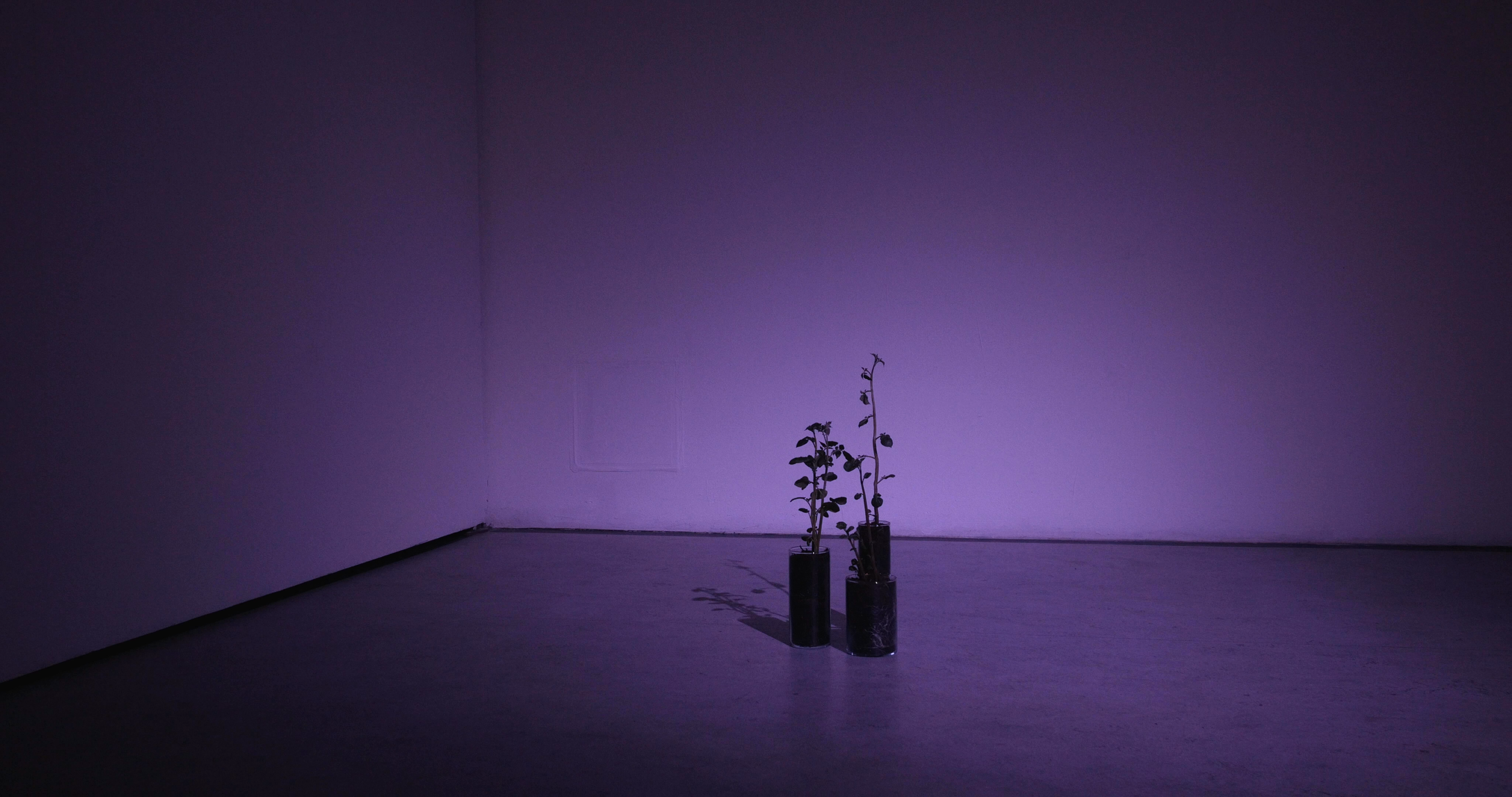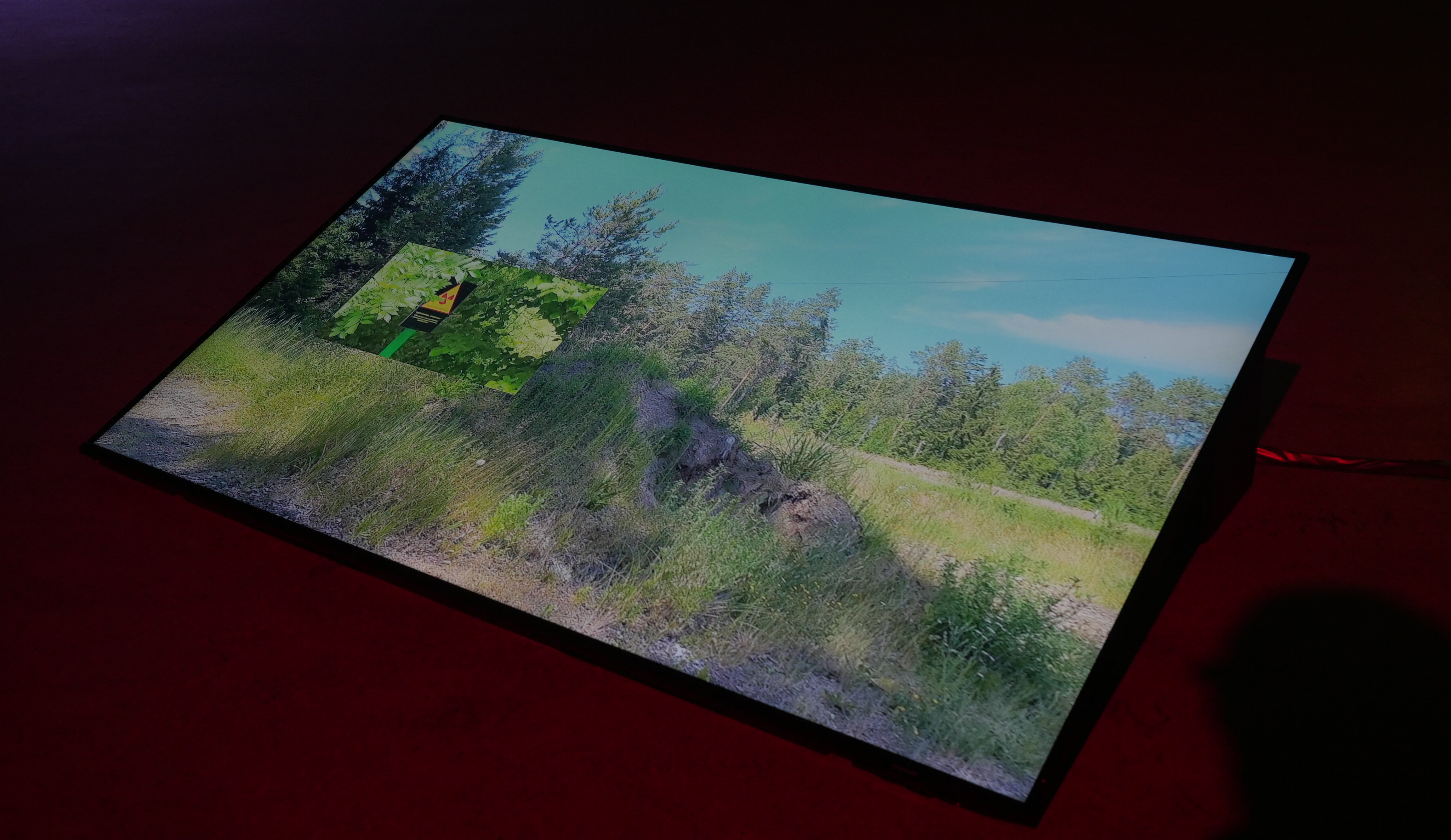Vypramieńvannie/Radioactivity

The discovery of radiation helped to unlock the deep time of present and future. Radiometric clocks are used to predict the age of rocks and other mineral materials through radiation decay. The deep future is connecting us to the unknown — how long will it take for radiation pollution to decay? From various nuclear tests and sinking of nuclear submarines in the ocean, from technogenic catastrophes (of or pertaining to a process or substance created by human technology; anthropogenic, manmade). Connections exist between the nuclear and the cosmical from radium — a shining element found in uranium and compared to the sun — to cosmos exploration and the particles of radioactive dust spreading into the soil and air around the Earth.
As Svitlana Matviyenko said in her 𝔗𝔥𝔢𝔯𝔪𝔬𝔫𝔲𝔠𝔩𝔢𝔞𝔯 ℭ𝔶𝔟𝔢𝔯𝔴𝔞𝔯 lecture at 0x.salon shortly following the start of the full-scale invasion of Ukraine by Russia: “The Charnobyl reactor opened its potential right now.” [1] And indeed, the disturbance of the exclusion zone — where despite the radiation, nature has since recovered to levels it was at before human habitation — unlocked some critical time in recent history.
The land of Ukraine is being contaminated with chemicals from rockets and mines, like some time ago the land of Paliessie — a region in North of Ukraine, South Belarus and partially in Poland and Russia — was contaminated with radiation. As pollution from Charnobyl was spread around the globe, it is still found in fungi and animals, and some traces are distributed through food supply chains. In the same way, pollution from wars spreads around the Earth and beyond, possibly to the cosmos.
Radiation is invisible to the human eye and is made of rays, some of which are able to penetrate through human bodies. During the process of radioactive disintegration, different elements decay and have different half-lives. For example, the half-life of Americium-241 is 432.2 years. Strontium-90 has a half-life of 28 years and is very dangerous, because its chemical constitution is similar to calcium. This is why it can accumulate in bones, leading to tumours and other health problems.
After the explosion in the Chernobyl nuclear factory in 1986, one of the elements that was released to the ecosphere was Iodine-131. Even though this element is one of the fastest to decay, it is still very dangerous. Following the catastrophe, Iodine supplements should have been introduced into humans’ diet, so Iodine-131 wouldn’t be absorbed. While Iodine-131 has a short half-life of 8 days, the radiation can still destroy all or part of the thyroid gland. Pure Iodine solution is also very dangerous to humans and if swallowed, can cause poisoning and death. But still, Iodine remains a very important element for the well-being of living systems.
The aim of this project is to discover the entanglements of nuclear technology. This view into the zone helps show an advanced laboratory of the consequences and long-term legacies of irradiated waste colonialism. In the contaminated zone there were 3,678 towns and villages, where 2.2 million people lived, who were displaced after the catastrophe.
This project consists of 4 major parts: The Iodine time-machine installation, the Vypramieńvannie/Radioactivity video piece, a written collection of personal stories and other histories, and potato plants.
The installation consists of a rusted metal podium, with a concrete-covered box on which sits an aquarium filled with a water-starch solution. Suspended above is a second concrete box, similar in size to the lower one. Inside the upper box are 20 solenoid valves with a custom PCB and Arduino to run the electronic components. Also there is a water tank with an Iodine-water solution. When the water drops from the top into the aquarium, an Iodine-starch reaction is triggered and the water in the tank turns from pale white to a blue-violet colour. It is a time-machine, which shows the extended time of radiation decay and pollution degradation as well as the impossibility of dealienation of the Exclusion zone and other zones created by fallout and contamination. The development of the nuclear industry around the world was sped up by the Cold War arms race. Since then, construction and deployment of nuclear facilities was a primary focus of the USSR and later the Russian Federation. Charnobyl NPP was the first nuclear plant built on the territory of Ukraine. It was a site for military infrastructure with a series of ZATO (closed cities) including the city of Pripyat. The exclusion zone and Charnobyl NPP were among the first sites of the full-scale invasion of Ukraine by Russia in February 2022.
Rooting – search for a sign (6:52 min) is a video piece telling a story of the search for a Radiation sign in Minsk region, where there are still some patches of radioactive pollution from the Charnobyl catastrophe. Actually, a huge amount of area was contaminated not far from Minsk. It is a poetic video which consists mainly of footage shot during one day in Belarus. You can see different landscapes which are very typical for Belarus: fields of potato and corn, forests, village houses. Some of these areas were cleared out, in some of them radiation sits deep in the soil, spreading around through roots of vegetables.
The written part consists of 5 main pieces: “Isotopes of the past”, “Zones”, “Core of the nucleus”, “Rooting”, “Dealienation”. It is a collection of personal stories like “Mushroom picking stories”, memories of my family members, a translation of a story written by my grandmother’s brother, historical information and an overview of the topics of radiation, colonialism, war and contamination.
Potato plants symbolise the source of potato starch and are also a connection to roots and earth. They represent one of the stories from Rooting. Among neighbouring countries Belarusians are called “bulbash”, which literally means “potato man”. This term is especially perpetuated by Russian popular culture and its origins can be traced to the Russian Orthodox Church and introduction of the potato to the European continent.
[1] Matviyenko, Svitlana, Thermonuclear cyberwar, lecture notes, 0x.salon Discord server, https://twitter.com/engelhardt_x/status/1510907498689175554. Delivered on 4 Apr. 2022









